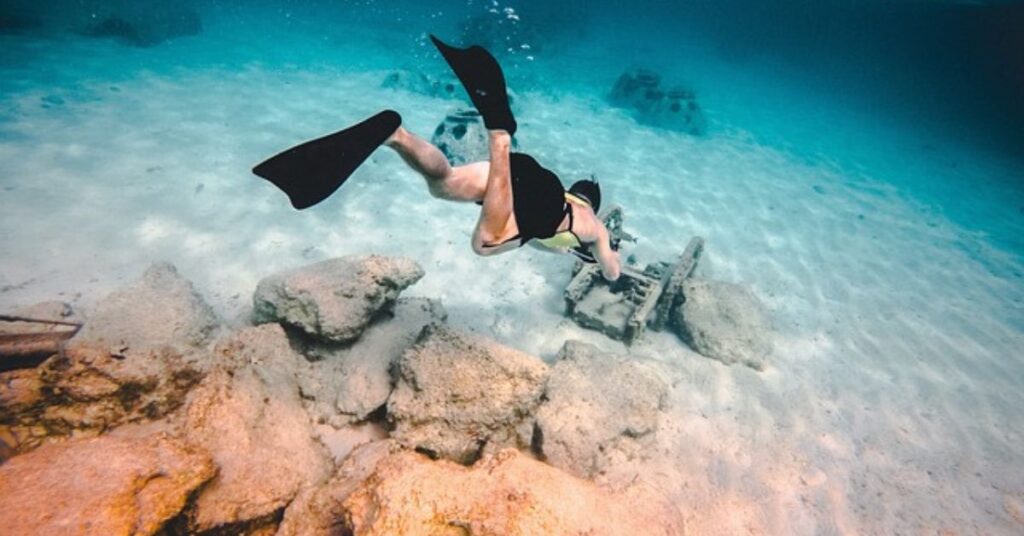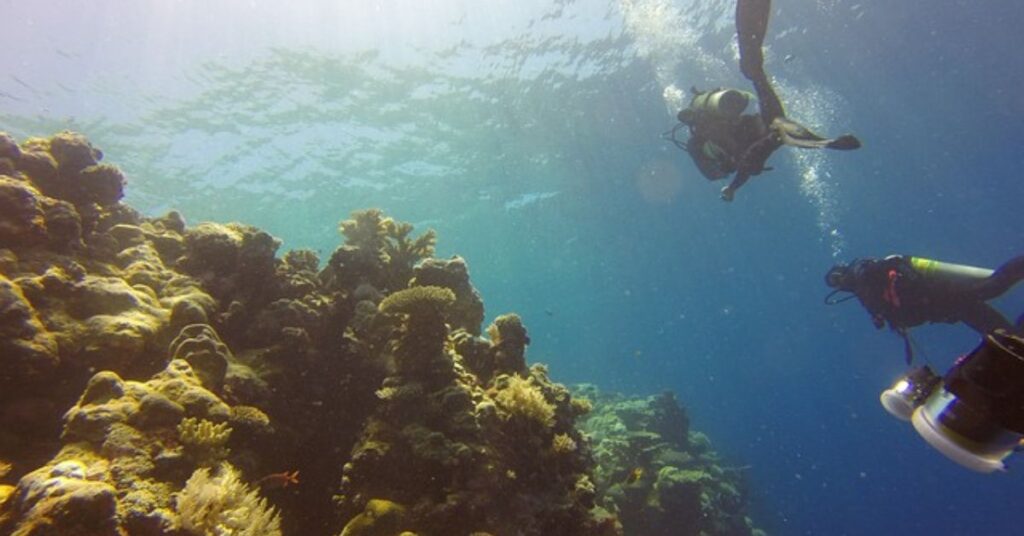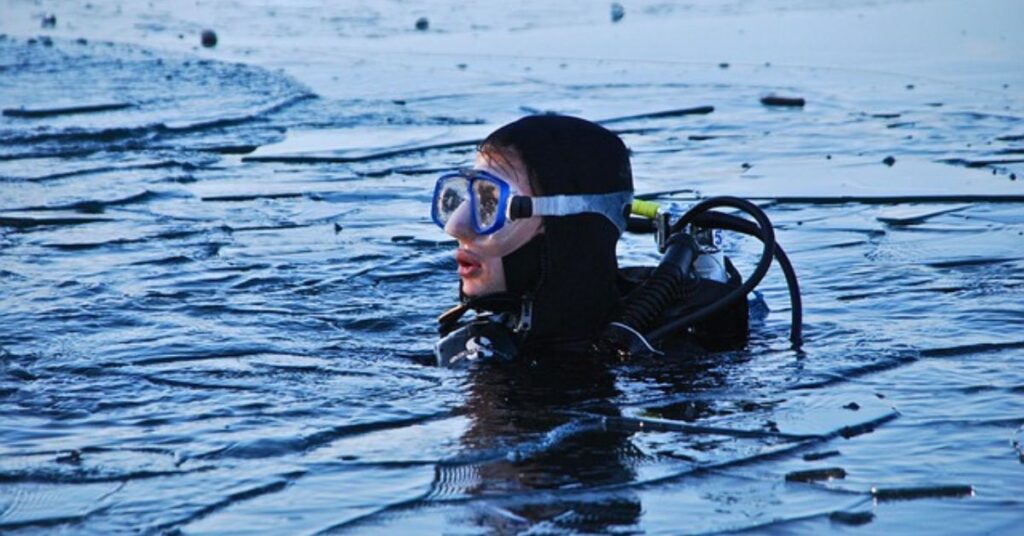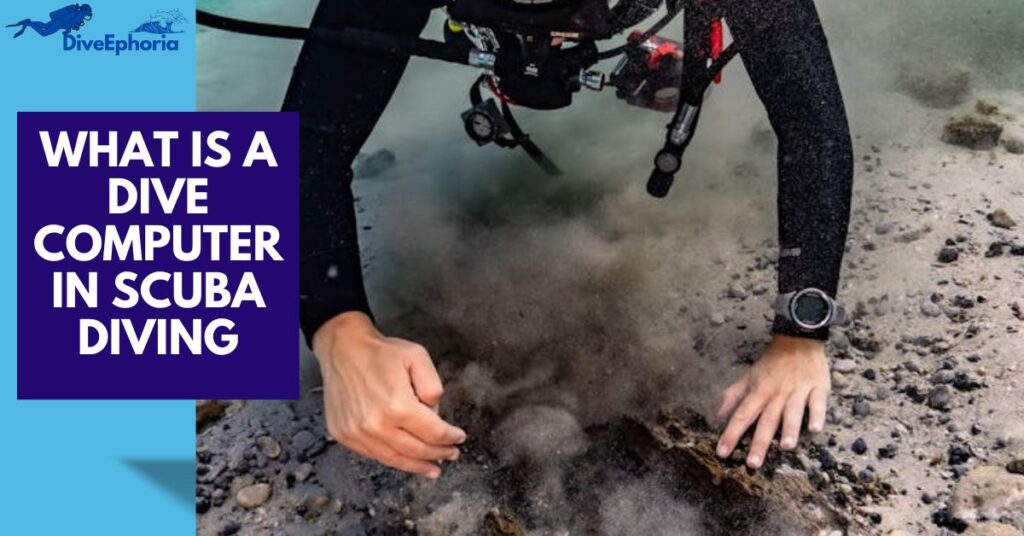
Table of Contents
Introduction
Have you ever wondered what the acronym “SCUBA” stands for? If you’ve ever tried scuba diving or even just been curious about the underwater world, you’ve probably heard the term SCUBA tossed around. But do you really know what it means, where it came from, and how it’s evolved in 2025? Many newcomers and even some experienced divers get confused about the origins and full significance of SCUBA, especially as technology and terminology continue to develop.
This can make it difficult to fully appreciate the sport or understand the equipment and techniques behind it. If you’ve found yourself searching for clear, up-to-date answers, you’re in the right place.
In this exploration guide, we’ll break down the origins of the term SCUBA, explain its full meaning, and update you on how it’s understood in 2025. Whether you’re just starting out in the sport or simply love exploring new knowledge about underwater adventures, this article will provide you with a clear, comprehensive explanation and the latest insights into the world of scuba diving.
What Does SCUBA Stand For?

SCUBA stands for Self-Contained Underwater Breathing Apparatus, a term that perfectly describes the innovative gear that allows humans to explore the underwater world independently and safely. This revolutionary equipment provides divers with the ability to breathe underwater without the need for any surface air supply, opening up a whole new realm of possibilities for underwater treasure hunting, marine research, and recreational diving.
Let’s break down each part of the SCUBA acronym to understand what makes this equipment so essential in the world of scuba diving gear and underwater exploration:
- Self-Contained: This emphasizes that the diver carries their own air supply, making the system completely portable. Unlike surface-supplied diving equipment, which relies on air hoses connected to the surface, SCUBA gear enables total freedom of movement underwater. This portability is what makes SCUBA diving the preferred choice for most recreational divers, underwater photographers, and treasure hunters. It’s this self-contained system that lets divers explore remote locations, underwater caves, and wrecks without being tethered.
- Underwater: This refers to the environment where the apparatus is used—beneath the surface of lakes, oceans, and other bodies of water. Whether you are exploring coral reefs, wreck sites, or magnet fishing spots, SCUBA equipment is designed to function in various underwater conditions, including deep-sea, cold water, or warm tropical environments. The adaptability of SCUBA gear to diverse underwater ecosystems has made it an indispensable tool for marine biologists and adventurers alike.
- Breathing: The primary function of SCUBA gear is to provide a reliable breathing mechanism underwater. The system typically consists of high-pressure tanks filled with compressed air or specialized gas mixtures, regulators to control airflow, and mouthpieces for easy inhalation and exhalation. This allows divers to maintain normal breathing rhythms, reducing stress and enhancing safety during extended dives. The quality and strength of your breathing apparatus are crucial when engaging in activities like deep-sea diving or underwater treasure hunting.
- Apparatus: This term encompasses the entire system of equipment that makes SCUBA diving possible. It includes the air tanks, pressure regulators, buoyancy control devices (BCDs), dive computers, masks, fins, and other gear. Together, these components create a sophisticated setup that supports life underwater, controls buoyancy, and ensures diver safety. Over the years, advances in high-quality scuba diving equipment have improved the efficiency, safety, and comfort of diving, making it more accessible to people worldwide.
In summary, SCUBA is more than just an acronym—it represents a groundbreaking system that has transformed underwater exploration. The self-contained nature of the equipment grants divers independence, the breathing function sustains life underwater, and the apparatus as a whole integrates technology that supports safe and exciting adventures beneath the waves.
Whether you’re a beginner learning about scuba diving basics or an experienced diver looking for the best scuba gear in 2025, understanding the full meaning behind SCUBA is essential to appreciating the incredible freedom and exploration it offers.
How Does SCUBA Diving Work?

Understanding how SCUBA diving works is key to appreciating the incredible technology that allows humans to breathe and move freely underwater. Once you know what SCUBA stands for, it’s natural to want to learn how this system actually functions to make underwater exploration possible.
At its core, SCUBA diving relies on a self-contained underwater breathing apparatus that supplies divers with breathable air, enabling them to safely explore the depths beneath the surface. Let’s break down the essential components of SCUBA diving gear and explain how each plays a crucial role in the diving experience:
- Air Tank (Cylinder): The heart of the SCUBA system is the air tank, also known as the cylinder. It stores compressed air or special gas mixtures like Nitrox at high pressure, which divers breathe during their underwater excursions. Modern tanks are made from lightweight materials like aluminum or steel, designed for durability and safety. The amount of air in the tank determines how long a diver can stay submerged, making tank size and air management critical for safe diving.
- Regulator: This essential device connects to the air tank and controls the flow of air to the diver. The regulator reduces the high pressure from the tank to a breathable level and supplies air on demand when the diver inhales. It also includes a secondary regulator (octopus) for emergencies. High-quality regulators are vital for scuba diving safety and comfort, ensuring smooth, effortless breathing throughout the dive.
- Buoyancy Control Device (BCD): The BCD is a jacket-like piece of equipment that allows divers to control their buoyancy underwater. By inflating or deflating the BCD with air from the tank, divers can achieve neutral buoyancy—a state where they neither sink nor float. This control is crucial for maneuvering underwater efficiently, conserving energy, and protecting delicate marine environments by avoiding contact with the seabed or coral reefs.
- Wetsuit or Dry Suit: Since water temperatures can be cold even in tropical areas, thermal protection is essential. Wetsuits are made from neoprene, trapping a thin layer of water warmed by the diver’s body heat to provide insulation. Dry suits, on the other hand, keep the diver completely dry and are used in colder waters. Wearing the right suit ensures comfort, prevents hypothermia, and allows longer dive times.
- Mask and Fins: A clear vision underwater is critical for navigation and safety. The diving mask creates an air space in front of the eyes, allowing divers to see clearly underwater. Fins increase propulsion and efficiency, helping divers swim smoothly and conserve energy. Together, they form basic yet vital components of any scuba diving kit.
When these components work together, they create a seamless system that supports the diver’s breathing, movement, temperature regulation, and buoyancy control. SCUBA diving enables exploration of underwater environments ranging from shallow reefs to deep wrecks—places unreachable by traditional snorkeling.
This combination of equipment and technology allows divers to spend extended periods underwater, explore hidden underwater landscapes, and discover marine life in their natural habitats safely. Whether you’re a beginner learning scuba diving basics or an advanced diver exploring deep-sea diving techniques, understanding how SCUBA gear functions is fundamental to a safe and enjoyable diving experience.
What Does BCD Stand for in SCUBA Diving?

In the world of SCUBA diving, another essential acronym you’ll often hear is BCD, which stands for Buoyancy Control Device. The BCD is a critical piece of diving equipment that plays a fundamental role in helping divers manage their buoyancy underwater—allowing for a safer, more controlled, and energy-efficient dive.
So, what exactly is a Buoyancy Control Device, and why is it so important?
The BCD is essentially a wearable jacket or vest that can be inflated or deflated using air from the diver’s tank. By adjusting the amount of air in the BCD, divers can precisely control their buoyancy, meaning they can float, sink, or hover at any depth with ease. This control over buoyancy is crucial because it helps divers:
- Ascend Safely: Gradually reducing buoyancy to rise toward the surface without rapid or dangerous ascents.
- Descend Smoothly: Increasing negative buoyancy to sink gently without using excessive effort.
- Maintain Neutral Buoyancy: Achieving a state where the diver neither sinks nor floats but hovers effortlessly in the water column. This allows divers to explore underwater environments without disturbing marine life or the seabed.
Without a BCD, divers would have to rely solely on their lungs and weights to control buoyancy, which is inefficient and less precise. The invention of the BCD revolutionized scuba diving by offering a safe and effective way to maintain control underwater, helping divers conserve energy and extend dive times.
Additionally, many BCDs come with integrated features like weight pockets for carrying lead weights, multiple attachment points for accessories, and even quick-release mechanisms for safety. Choosing the right BCD is a key part of assembling your best scuba diving gear and directly impacts your diving comfort and safety.
In summary, the Buoyancy Control Device (BCD) is much more than just an accessory—it’s a vital tool that enhances diver control, safety, and overall experience underwater. Whether you’re a beginner just learning the ropes or an experienced diver looking to upgrade your equipment, understanding and mastering your BCD is essential for successful scuba diving adventures in 2025 and beyond.
What Does PADI Stand for in SCUBA Diving?

If you’re interested in becoming a certified SCUBA diver, chances are you’ll frequently hear the acronym PADI, which stands for the Professional Association of Diving Instructors. PADI is one of the largest and most respected organizations in the world dedicated to providing high-quality SCUBA diving education and certification.
Founded in 1966, PADI has grown into a global leader in diver training, with thousands of dive centers and instructors around the world offering their courses. Whether you’re a complete beginner eager to experience your first dive or an advanced diver looking to pursue professional levels like Divemaster or Instructor, PADI offers structured programs tailored to every skill level.
The significance of PADI certification lies in its rigorous standards and widespread recognition. A PADI certification card proves that you have undergone professional training and are equipped with the knowledge and skills to dive safely. This certification is accepted internationally, allowing divers to rent equipment, book dive trips, and participate in underwater excursions almost anywhere on the planet.
PADI’s training programs emphasize not only technical skills but also diver safety, environmental awareness, and respect for marine ecosystems. This aligns perfectly with the growing trend in 2025 toward responsible and eco-friendly diving practices.
For anyone passionate about exploring the underwater world, obtaining PADI certification is often the first step toward a lifelong adventure in diving. Whether you’re aiming to become a recreational diver or take your passion to the professional level, understanding what PADI stands for and its role in SCUBA diving is essential.
Why Is SCUBA Important?
SCUBA diving is much more than just a recreational activity—it’s a gateway to exploring one of the least accessible and most fascinating environments on Earth: the underwater world. The importance of SCUBA lies in its ability to unlock this hidden realm, offering unique experiences and opportunities that are impossible to achieve otherwise.
For adventure seekers, SCUBA diving opens the door to breathtaking underwater landscapes, from vibrant coral reefs teeming with marine life to mysterious shipwrecks waiting to be discovered. It allows divers to immerse themselves in an environment that feels otherworldly, offering unparalleled excitement and exploration.
Beyond adventure, SCUBA is invaluable for scientific exploration and marine conservation. Marine biologists, underwater archaeologists, and environmental researchers rely on SCUBA equipment to study fragile ecosystems, monitor endangered species, and conduct underwater surveys. This research helps increase our understanding of ocean health and supports efforts to protect marine habitats.
SCUBA also provides a unique form of relaxation and mental wellness. Many divers report a profound sense of calm and peace when submerged underwater, away from the noise and stress of everyday life. The quiet, weightless environment helps reduce anxiety and fosters mindfulness.
In 2025, SCUBA diving continues to evolve with technological advances in equipment and training, making it safer, more accessible, and environmentally conscious. Whether you’re looking to embark on thrilling underwater adventures, contribute to scientific knowledge, or simply enjoy the serenity of the ocean, SCUBA is the key that unlocks these incredible experiences.
Ultimately, SCUBA diving is important because it connects us to the ocean in a way few other activities can—enhancing appreciation for marine life, supporting conservation efforts, and enriching human experience through exploration.
Conclusion
SCUBA diving opens up an entirely new world beneath the water’s surface, and understanding what SCUBA stands for is just the first step on your exciting underwater journey. From the Self-Contained Underwater Breathing Apparatus that powers your dive to essential gear like the Buoyancy Control Device (BCD) and trusted certifications such as PADI, diving has its own language and specialized equipment that enable adventurers to safely explore the ocean’s depths.
As technology advances and training becomes more accessible in 2025, scuba diving is easier and safer than ever before, welcoming newcomers and experienced divers alike. Whether you’re eager to get certified, looking to upgrade your scuba diving equipment, or simply wanting to learn more about this incredible sport, the underwater world is ready to reveal its wonders.
So, are you ready to take the plunge? Dive into the fascinating world of SCUBA diving and experience the thrill, beauty, and serenity that lie beneath the waves. Your adventure awaits!
Internal Links:
- Check out our guide on best SCUBA gear for beginners
- Top PADI dive certifications
- Exploring the ocean: SCUBA diving tips
External Links:
FAQs About SCUBA Diving
What does SCUBA diving stand for?
SCUBA stands for Self-Contained Underwater Breathing Apparatus. It refers to the equipment divers use to breathe underwater without surface air.
What does the acronym SCUBA stand for?
The acronym SCUBA stands for Self-Contained Underwater Breathing Apparatus.
What does BCD stand for in SCUBA diving?
BCD stands for Buoyancy Control Device. It’s an essential piece of diving gear used to control buoyancy underwater.
How does SCUBA diving work?
SCUBA diving works by using specialized equipment like air tanks, regulators, BCDs, and wetsuits to allow divers to breathe and navigate underwater safely.
What does PADI stand for in SCUBA diving?
PADI stands for Professional Association of Diving Instructors and is one of the most popular and respected organizations for SCUBA diving certification.
How deep can you go while SCUBA diving?
The depth a diver can safely go depends on their experience level and certification. Recreational divers typically dive to depths of around 100 feet, while advanced divers may go deeper, depending on their training.


